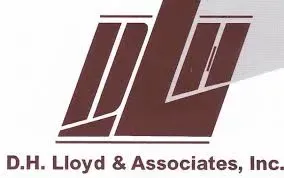See How We're Different
or call us: 202-223-1506
The rise in general liability insurance rates has become a pressing issue for businesses across Maryland. Understanding the underlying causes is essential for business owners aiming to navigate this increasingly complex landscape effectively. This article delves into various factors influencing these rates, the role of industry risks, the impact of claims history, and future predictions to guide businesses in preparing for potential changes.
Understanding General Liability Insurance
General liability insurance is a cornerstone of risk management for businesses. It offers coverage against third-party claims related to bodily injury, property damage, and personal injury, ensuring that businesses have a financial safety net in case of unexpected incidents.
The Basics of General Liability Insurance
At its core, general liability insurance protects businesses from the financial repercussions of claims made by clients, vendors, or the public. Typical coverage includes legal fees, settlement costs, and medical expenses resulting from accidents that occur on business premises or are caused by business operations.
Policies typically cover incidents such as slips and falls, product defects, and advertising mistakes. Businesses often tailor the coverage limits to reflect their risk exposure, which can vary widely based on the type of industry and scale of operations. For instance, a construction company may face greater risks associated with physical injuries on-site, while a tech firm might be more concerned with the implications of data breaches and intellectual property disputes.
Importance of General Liability Insurance for Businesses
For businesses in Maryland, general liability insurance is not just a safety net; it is often a requirement. Many clients and partners require proof of liability insurance before engaging in business, seeing it as a sign of professionalism and risk management.
Moreover, this coverage is vital in protecting assets. A significant claim could cripple a business financially, making liability insurance an essential consideration for long-term sustainability. In addition to safeguarding financial resources, having general liability insurance can enhance a company's reputation. It demonstrates to customers and stakeholders that the business is responsible and prepared for potential risks, which can lead to increased trust and customer loyalty.
Furthermore, the peace of mind that comes with having this coverage allows business owners to focus on growth and innovation rather than constantly worrying about potential legal challenges. This is particularly important in today’s fast-paced business environment, where the ability to adapt and respond quickly can be the difference between success and failure. As businesses navigate an increasingly litigious landscape, general liability insurance becomes not only a protective measure but also a strategic asset that supports overall business resilience.
Factors Influencing Insurance Rates in Maryland
The increase in general liability insurance rates is influenced by a complex interplay of various factors. Understanding these can help business owners plan and budget accordingly.
Economic Conditions and Insurance Rates
Economic conditions play a significant role in determining insurance rates. In periods of economic downturn, insurance companies may raise rates to compensate for increased claims or losses. Conversely, a thriving economy can lead to more business activities and, consequently, more claims, which may also result in increased premiums.
Economic indicators such as inflation, employment rates, and industry growth impact how insurers assess risk and set premiums. In Maryland, fluctuations in these indicators can directly affect business insurance costs. For instance, if the unemployment rate falls and consumer spending rises, businesses may expand, leading to a surge in operations and potential liabilities. This uptick can prompt insurers to reevaluate their risk exposure and adjust rates accordingly. Additionally, the real estate market's health can also influence insurance rates, as rising property values may lead to higher coverage amounts and, thus, increased premiums.
Legal and Regulatory Changes Impacting Rates
Maryland's legal environment also influences insurance rates. Changes in laws regarding liability claims, such as modifications to liability limits or court rulings, can prompt insurers to reconsider their pricing strategies. If new regulations lead to an increased number of claims or larger settlements, insurers may increase rates to mitigate their risk.
Staying abreast of these changes is vital for business owners, as even minor legal adjustments can significantly impact overall insurance costs. For example, Maryland's unique tort laws, which govern how damages are awarded in personal injury cases, can lead to varying levels of liability exposure for businesses. Furthermore, the introduction of new consumer protection laws can also affect how claims are filed and processed, potentially leading to increased costs for insurers. Business owners should regularly consult with insurance professionals and legal advisors to navigate these complexities and ensure they are adequately protected against evolving risks.
The Role of Industry Risks in Insurance Costs
The type of industry in which a business operates significantly affects its general liability insurance rates. Certain industries are categorized as high-risk, leading to higher premiums due to the greater likelihood of claims.
High-Risk Industries in Maryland
Industries such as construction, manufacturing, and healthcare are often considered high-risk due to their nature of operations. For example, construction businesses may face increased claims from site accidents, while healthcare providers deal with the complexities of patient care liability. The construction sector, in particular, is notorious for its hazardous work environments, where falls, equipment malfunctions, and exposure to harmful substances can result in serious injuries. Similarly, in healthcare, the stakes are high as professionals navigate the intricacies of patient treatment, which can lead to malpractice claims if not handled with utmost care.
Due to these inherent risks, businesses in such sectors can expect to pay considerably higher premiums compared to those in less risky fields, like technology or consulting services. This disparity in insurance costs can create significant financial pressure on high-risk industries, often necessitating a careful balancing act between maintaining comprehensive coverage and managing operational budgets.
How Industry Risks Affect Insurance Rates
Insurance companies assess the level of risk associated with various industries based on historical data and trends. They use this information to set premiums reflective of the risk level. This means that as certain industries experience changes in claims history or operational environments, insurance rates may also fluctuate accordingly. For instance, if a particular industry sees a spike in claims due to a new regulation or a shift in market practices, insurers may respond by adjusting their rates to account for the increased risk. This dynamic nature of insurance pricing underscores the importance of staying informed about industry trends and potential liabilities.
Additionally, businesses that implement effective risk management strategies—such as safety training and regular compliance checks—can often negotiate lower premiums, highlighting the importance of proactive measures in managing costs. Insurers are more likely to offer favorable terms to businesses that demonstrate a commitment to reducing risks through comprehensive training programs and safety protocols. Furthermore, adopting technology solutions, such as incident reporting software or predictive analytics, can help businesses identify potential hazards before they escalate, ultimately contributing to a more favorable insurance profile. By fostering a culture of safety and accountability, companies not only protect their employees but also position themselves for more advantageous insurance arrangements.
The Impact of Claims History on Insurance Rates
A business's claims history is one of the most influential factors in determining its insurance premiums. Insurers closely analyze past claims to gauge the likelihood of future incidents, which can lead to raised rates if a business has a poor claims record.
The Relationship Between Claims and Premiums
Every claim filed can have a lasting impact on insurance premiums. Frequently claimed policies may result in annual rate increases or difficulty obtaining coverage in the future. Insurers view a business with multiple claims as a higher risk, which naturally translates to increased costs.
As such, maintaining a clean claims history is crucial for Maryland businesses looking to manage their insurance expenses effectively.
Strategies for Managing Claims to Control Costs
There are several strategies that businesses can employ to manage claims and ultimately control costs. These include:
- Implementing strong safety protocols to minimize workplace accidents.
- Engaging in regular training and awareness programs for employees.
- Establishing a proactive approach to identifying and mitigating potential risks.
- Working closely with insurance brokers to ensure adequate coverage and competitive rates.
By embracing these strategies, businesses not only protect themselves from potential claims but also can sustain lower insurance costs over time. Additionally, maintaining open lines of communication with employees about safety practices can foster a culture of accountability and vigilance. When employees are aware of the risks and trained to handle them appropriately, the likelihood of accidents decreases significantly, leading to fewer claims and lower premiums.
Moreover, businesses should consider conducting regular audits of their claims history and risk management practices. This proactive approach allows them to identify patterns or recurring issues that may lead to claims. By addressing these underlying problems, businesses can not only reduce their risk exposure but also demonstrate to insurers that they are committed to maintaining a safe working environment, which can further enhance their standing when it comes to premium negotiations.
Future Predictions for General Liability Insurance Rates
As the insurance landscape continues to evolve, both insurers and business owners need to consider future trends where general liability insurance rates are concerned.
Trends in the Insurance Market
Current trends indicate a movement towards more personalized insurance policies, where coverage may be tailored to the unique needs of businesses. This customization could lead to more competitive rates in the long run, benefiting those who actively manage their risk exposure.
Furthermore, the ongoing advancements in technology, such as data analytics and artificial intelligence, are shaping underwriting practices. Insurers are increasingly leveraging these tools to make informed decisions, potentially leading to more accurate rate settings based on real-time risk assessments. The integration of telematics and IoT devices in various industries is also contributing to this trend, as businesses can now provide insurers with detailed insights into their operations and risk profiles, allowing for more precise underwriting and pricing models.
Preparing Your Business for Future Rate Changes
In light of these developments, it is crucial for Maryland businesses to proactively prepare for potential future rate changes. This preparation entails regularly reviewing coverage, staying informed of market trends, and investing in risk management. Businesses should consider investing in training, safety equipment, and other measures designed to minimize risk and claims. Additionally, establishing a culture of safety within the organization can significantly reduce incidents that lead to claims, thus positively influencing insurance rates over time.
By maintaining an open line of communication with insurance agents and understanding both current and upcoming market changes, businesses can better position themselves to anticipate and manage any shifts in their general liability insurance premiums. Engaging in regular risk assessments and audits can also help identify potential vulnerabilities that need addressing, ensuring that businesses remain proactive rather than reactive in their approach to risk management. Moreover, participating in industry groups or forums can provide valuable insights into best practices and emerging trends, further equipping business owners to navigate the complexities of the insurance landscape.
Recent posts
For over 40 years D.H. Lloyd & Associates has provided commercial insurance solutions covering multiple facet of business risk.
QUICK LINKS
CONTACT US
Phone:
202-223-1506
Email: contactus@dhlloyd.com
Address: 1625 K St NW, Washington, DC 20006, United States
All Rights Reserved | D.H. Lloyd & Associates | Privacy Policy | Legal Disclaimer | Sitemap | Built & SEO'd by Convirtue




